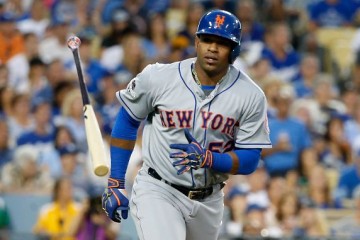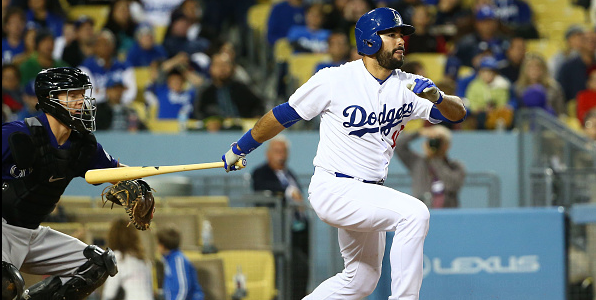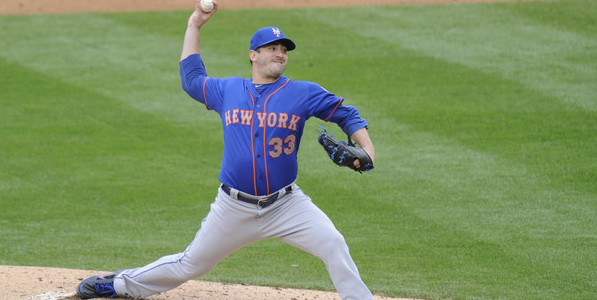The Platoon Advantage

In one of my previous articles, I mentioned Diamond Dollars by Vince Gennaro. One of the concepts he is famous for advancing is the idea of the “platoon advantage.” Like Moneyball before it, Diamond Dollars is a study (in part) on how a team can best use its financial resources. The concept of the platoon is almost as old as baseball itself. It may seem like the data age is relatively recent, but teams have been keeping track of batting and pitching splits for decades. Gennaro simply looked at the concept from an economic perspective. Let’s consider three players.
- Player A: .290/.362/.476/.858
- Player B: .247/.302/.449/.751
- Player C: .270/.319/.409/.728
One of these players will make 13.5 million in 2013 while the other two will make 2.5 million and 2.25 million. It isn’t hard to see from the overall numbers which player is which. At least, we know Player A is likely the one making the large sum because his numbers are head and shoulders above the other two. The idea behind both Moneyball and Diamond Dollars is about exploiting inefficiences in the market. Some focus their attention on OBP, and the above numbers would indicate that the team that signed Player A to that large sum made a wise investment. However, players can be broken down into their parts and those parts can be reconstituted into something else. Let’s look at the same three players against only right-handed pitchers.
- Player A: .321/.399/.530/.929
- Player B: .231/.286/.443/.729
- Player C: .277/.340/.446/.786
The gap between the players becomes more pronounced as Player A is transformed into an absolute stud. Now, we can see why the team in question signed the player for a fairly large sum of money. The slash lines above reflect what we might call an all-star while the other two continue in the medicore range. Mediocre players typically get mediocre salaries (2.5 million and 2.25 million respectively.) Yet, our opinions of the players involved might change when we switch to left handed pitchers.
- Player A: .222/.277/.329/.607
- Player B: .277/.317/.510/.827
- Player C: .219/.253/.290/.543
Who are you and what did you do with my all-star? Since right-handers make up a bulk of the game, we can be fooled into thinking that Player A is a stud when he is really only a stud against right-handed pitchers. We can create the same effect by combining the efforts of Players B and C as one team has done this year. Let’s compare the overall results again, but instead look at the platoon effects with Players B and C playing only against left handers and right handers respectively.
- Player A: .290/.362/.476/.838
- Player B/C: .277/.329/.478/.807
Is Player A still the better overall player? Sure he is, but remember that he is being paid 13.5 million dollars as compared to the combined 4.75 million that Player B and C are being paid by the same team. Before we move onto the fantasy lessons from this little example we should talk a little further about what is happening baseball wide. Most teams are learning that they can get 80 percent of an all-star level performer (say someone that mashes against righties) for a fraction of the cost it would take to get 100 percent of all-star level production. That same team can sign someone that is proficient against lefties and recreate the aggregate of the all-star for less than half the price. Since I know you are all waiting with baited breath, here are the answers to the question of who is player A, B, and C:
- Player A= Andre Ethier– Los Angeles Dodgers
- Player B= Scott Hairston– Chicago Cubs
- Player C= Nate Schierholtz– Chicago Cubs
The Fantasy Connection
No, I am not advocating that people select Scott Hairson and Nate Schierholtz. Both players should go undrafted in most leagues and both have major flaws even when you consider them on their strong side. However, the lesson above can teach us a lesson on how we use our bench for our fantasy teams. Like most of you, I have used my bench in the past to simply load up on starting pitchers. The practice helps with counting statistics like strikeouts and wins, but skimping on our position players leaves us open to those negative splits like we saw above.
If you can imagine the situation above except with a good regular outfielder that happens to be right-handed. That player can be subbed into the starting lineup on days where the Dodgers face a lefty (assuming you have drafted Ethier). While Ethier will usually not be pulled, pulling him yourself will create a new player on your fantasy team. If you played Ethier only against righties then you have created a .938 OPS guy where one did not exist.
Like most of you, I have a day job that prevents me from studying statistics 40 hours a week. So, instead of doing splits on hundreds of guys, you can simply draft your team as you normally would, but save bench spots for position players that might be able to fill in here and there. You would only need them in cases where splits are so severe that you have a horrible disadvantage like you would with Ethier. Doing splits on 20 to 25 guys is a lot easier than doing it on 200 to 300.
Using the platoon advantage will give you the upper hand in your league because most players are plug in play types. They insert a lineup and might make changes based on starting pitchers on their bench that have upcoming starts. They usually don’t look at position players beyond who is running hot and cold. Rotating players in and out is not that difficult based on the information available. There are tons of apps for smart phones and tablets like the “Bill James Daily Matchups” app that gives the lifetime hitting numbers of the entire team against that day’s starting pitcher. It’s the same data that teams use to determine who should be in the lineup that day. Why not use it for yourself?
If you find this practice to be a little geeky, just remember what fantasy players do during fantasy football season. Outside of the studs at each position, they look to see who players are matched up against before setting their lineup. You might not start even a good running back against the San Francisco 49ers or you might start everyone you can offensively against the New Orleans Saints. Sitting Andre Ethier against Cliff Lee makes just as much sense. Teams are doing it more often and so should you.
You can follow Scott Barzilla on twitter at @sbarzilla.





